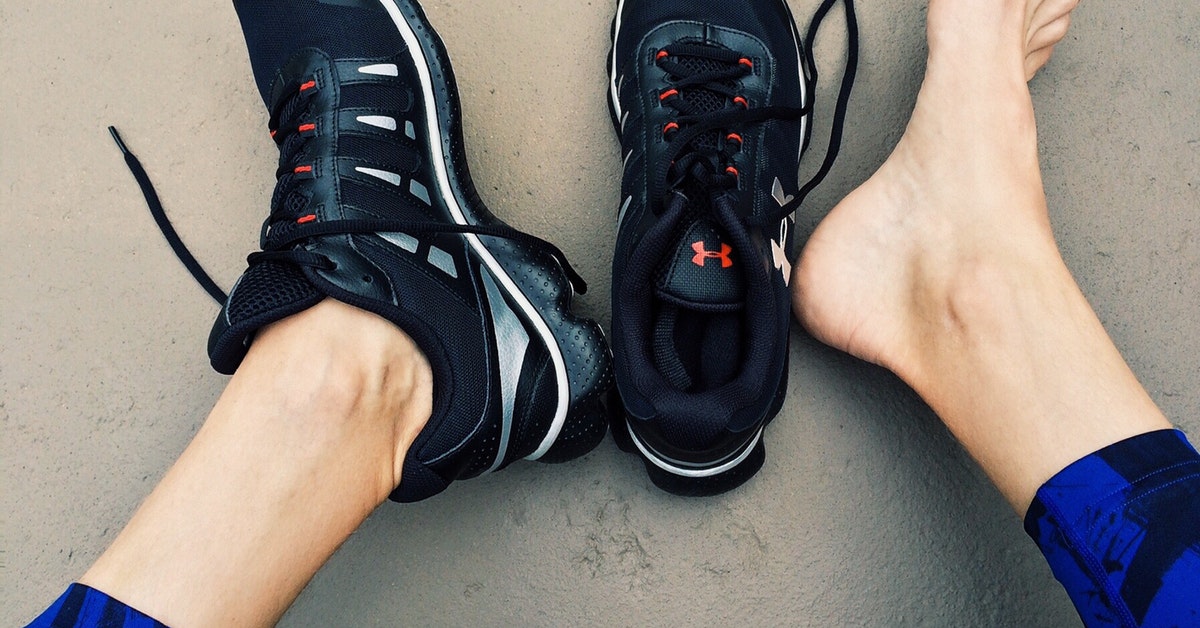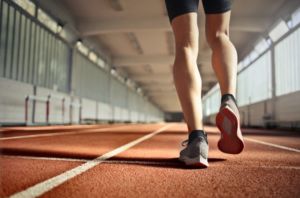Our feet are the foundation of movement for our bodies. They contain over one-hundred ligaments and muscles that stabilize the bones. The body works as a mechanical system, and every part is important. If one part isn’t functioning well, pain and dysfunction can happen throughout the musculoskeletal system. Our feet are complex structures, and many things can go wrong and affect our knees, hips, and backs.
Here are some common foot problems and how they may be affecting your back.
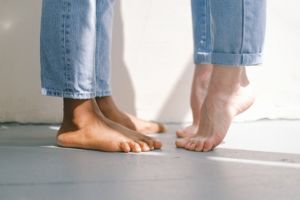
Structural Foot Problems
If your feet were buildings, they’d be marvels of engineering. Each foot has three arches. Just as in architecture, the arches in our feet lend strength and support. They help keep our feet balanced and add a spring to our step. Humans are not born with these arches; they develop over time as our feet endure our body weight.
Some people don’t develop fully formed arches. Other people do develop arches but sustain an injury that flattens them. In both cases, the person is said to have “flat feet.” This condition affects 20-30% of the general population and is often a cause of pain and injury. Flat footedness affects the way you walk (your gait). Flat feet tend to move in a way that puts strain on tendons and other tissues in the ankle and feet. They don’t provide the balance and support that your other joints need and don’t cushion your other joints from shock. You may experience local symptoms like pain around the heel and swelling on the inside of your ankle, in addition to unexplained knee or back pain.
Arches are good for your feet, but more of a good thing isn’t always better. Some people have very high arches, sometimes referred to as Cavus foot. Cavus foot can be genetic or can go along with neurological disorders like muscular dystrophy and cerebral palsy. An extremely high arch puts too much pressure on the ball of the foot and the heel. This can cause pain when a person has to stand or walk for an extended period of time. Even people with high arches that aren’t high enough to be called Cavus foot can experience discomfort. High arches can cause your feet to roll inward, putting stress on your ankles and knees.
Both flat feet and high arches can be treated with custom orthotic inserts. Flat feet benefit from an insert that provides some of the support that a natural arch would give. Some people have flexible flat feet. This means that an arch appears when the person is sitting and disappears when they stand. These individuals can wear orthotics that prop up their natural arch. People with high arches need orthotics that spread their weight across the foot more evenly.
How Your Feet Hit The Ground
Runners are familiar with the terms overpronation and underpronation. These are descriptions of certain types of gaits that can be problematic. Overpronation happens when the outside of the heel hits the ground first, and then the foot rolls inward towards the arch. Over time overpronation stretches ligaments and can flatten the foot.
Underpronation, also called supination, is the opposite of overpronation– the foot doesn’t role inwards far enough. Instead, the foot rolls outward and puts pressure on the ankles and toes. This gait puts a strain on tissues in the feet and ankles and can result in damage over time.
Pronation is related to the structure of your foot. People with flat feet tend to overpronate, and those with high arches tend to underpronate.
Overpronation and underpronation can both cause knee, hip, and lower back pain if left untreated. Orthotics that treat foot structure should also address pronation issues and provide support where needed to keep the gait balanced.
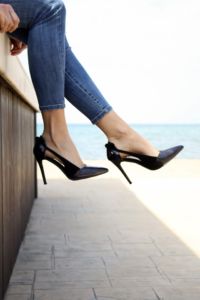
High Heels
Even if you have normal feet, wearing high heels on a regular basis can damage your feet and your spine. High heels cause your center of gravity to shift. This causes an exaggeration of your lumbar (lower back) spinal curve, your upper spinal curves then try to compensate, throwing your whole back out of alignment.
High heels put your body in an unnatural position that can tighten the tendons and ligaments in your legs and feet, making it difficult for your body to resume normal posture when you take your heels off. For a healthy back, avoid wearing high heels. If you must wear heels for an occasion, choose low, thick heels.
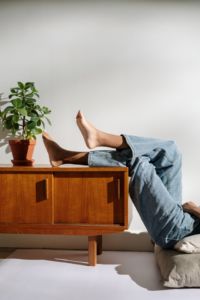
Leg Length Differences
Sometimes one leg is slightly shorter than the other. This can be caused by uneven growth, genetics, or scoliosis. Your chiropractor can screen you for this problem and see if it is contributing to your lower back pain. If you have a leg length difference, you can wear a lift in the shoe of your shorter leg to even things out.
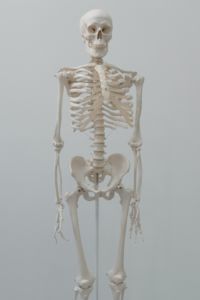
The Link Between Foot problems and Back Pain
People with flat feet and those with high arches are at a higher risk for back and joint pain. The abnormal gaits caused by these structural problems result in strain on the knees and hips. This can also throw the lower back out of alignment. No part of our bodies operates in a vacuum. The smallest abnormality in the feet causes problems all the way up the line.
If you are experiencing back or knee pain and don’t know of any obvious cause for it, your feet may be to blame. To find out for sure, you’ll need to be evaluated by an experienced professional. At Stanlick Chiropractic, we can scan your feet and use x-rays and examinations to diagnose structural foot problems, leg length differences, and gait issues.
We are experts in body mechanics, and we always treat the whole body. We provide custom orthotics that can mitigate the damage caused by foot problems, and chiropractic care to heal misalignments that have built up over time. Correcting foot problems now can prevent pain and injury later on, so don’t wait to get the care you need.

